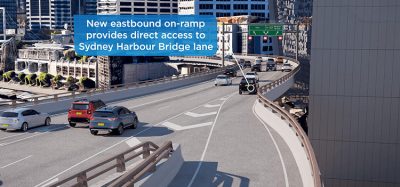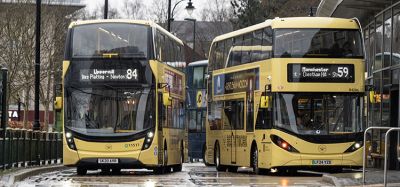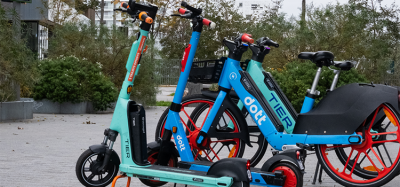Building Lakeland’s Traffic Management Center
- Like
- Digg
- Del
- Tumblr
- VKontakte
- Buffer
- Love This
- Odnoklassniki
- Meneame
- Blogger
- Amazon
- Yahoo Mail
- Gmail
- AOL
- Newsvine
- HackerNews
- Evernote
- MySpace
- Mail.ru
- Viadeo
- Line
- Comments
- Yummly
- SMS
- Viber
- Telegram
- Subscribe
- Skype
- Facebook Messenger
- Kakao
- LiveJournal
- Yammer
- Edgar
- Fintel
- Mix
- Instapaper
- Copy Link
Posted: 30 June 2020 | Angelo Rao - City of Lakeland | No comments yet
Angelo Rao P.E., Manager of Traffic Operations and Parking Services at the Public Works Department of the City of Lakeland, describes how the Florida city has become a “big little town” thanks in no small part to a decade of technological advancement in its transport network.
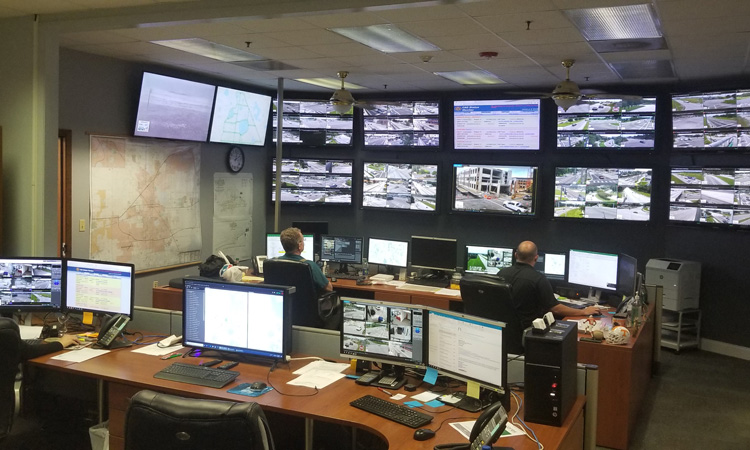

The City of Lakeland, with a population of 110,000 and situated in Polk County Florida, nestled between Tampa and Orlando, is home to a progressive, inspiring and multimodal transportation centre – and one that prioritises people.
In part, with the utilisation of 94 CCTV cameras for live monitoring and the Regional Integrated Transportation Information System (RITIS) along the city’s corridors, our division monitors traffic conditions and collects travel times in real time. The Florida Department of Transportation (FDOT) District 1 provides resources and works with the City of Lakeland’s Traffic Management Center (TMC) staff to implement signal timing changes to enhance traffic flow and reduce motorist delay.
Further, FDOT District 7’s Sun Guide Center in Tampa, Florida, Turnpike Center in Turkey Lake, and the City of Lakeland’s TMC team, work together through the Traffic Incident Management (TIM) Team to improve interstate-arterial coordination during incidents on I-4 and the Polk Parkway through Lakeland.
In the summer of 2005, the FDOT D-1 began the process of working with the City of Lakeland’s Traffic Operations and Parking Services Division (TOPS) to develop and implement the city’s first TMC. In those days, we had a 100 per cent copper ‘JHK Hybrid Signal System’ (just one workstation) in place for all 148 traffic signals.
The process eventually led to the creation of our modern-day Traffic Management Center (TMC) – even if it is for a relatively small city like Lakeland.
The arterial network
The TOPS Division strives to provide excellence in enhancing the safety, accessibility, and mobility (SAM) of all roadway users – particularly vulnerable users such as those with accessibility needs, children and the elderly. This approach ensures that all citizens and visitors of all physical and economic abilities are equally provided with the opportunities to enjoy all that the city has to offer.
The city had previously acquired hundreds of kilometres of fibre-optic cable which was repurposed for the FDOT/city traffic signal project”
The city’s arterial roadway system provides the backbone for safe and efficient movement of people and goods; the integrated traffic signal system is essential in moderating the flow in a systematic, balanced and ‘democratically coordinated’ manner.
This coordinated approach aims to minimise congestion, reduce oversaturation, accommodate long term variability, and manage incidents and special events.
Building the traffic signal system is one thing, but managing it is a different story!
Back to the future
In developing this story, we had to dig back into the history of the system and all the planning, design and implementation steps that took place in getting the city fully integrated with 100 per cent communication.
Credit should be given to the former Manager of the Traffic Operations and Parking Services Division, Don Nix (my predecessor), who worked with the FDOT D-1 team and the design consultant. The mission critical was to bring Lakeland into the 21st century with a fully-intergrated traffic signal communication and operations system.
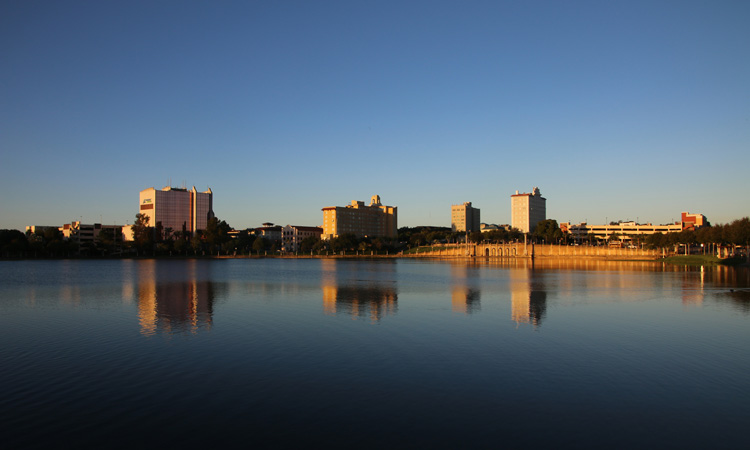

To accomplish this feat, the city team had to introduce and/or upgrade several sub-systems. For example, all of the copper from the old system had to go. Fortunately, in the late 1990s the city acquired hundreds of kilometres of fibre-optic cable to establish a comprehensive broadband system. That project never got off the ground, so the fibre was basically lying in a warehouse collecting dust. Enter the FDOT D-1 with an offer the city could not refuse: if the city donated the fibre, FDOT would use it to inter-connect all its traffic control signals and all the city’s signals. From this magical moment of true inter-agency cooperation, the city’s modern TMC seed was sowed.
The original system was comprised of National Electrical Manufacturers Association (NEMA) cabinets. Each of these elements had to be replaced with Type 170 cabinets and all the controllers were replaced with Advanced Traffic Control (ATC) ASC-II 2070 controllers – awesome at that time. To really make it work, the TMC two consoles and work stations were expanded; the video wall system was introduced with three video monitors supporting 42 new cameras; and the final programming of the controllers, network servers, network switches, and desktop computers was completed.
On a roll
Building the traffic signal system is one thing, but managing it is a different story!”
In 2012, TOPS staff, learning from the original installation, personally worked with D-1 and their system developer, to further upgrade the entire system. The aim of this phase was to have full communications with all controllers. The three key elements of this upgrade included:
- Installing new central software
- Upgrading to new ASC-III 2070 central processing units (CPU)
- Upgrading the video wall and associated software.
Upgrading the central software and the ASC-III CPU took five days to complete by TOPS staff along with the city’s contractor. The video wall and software upgrade (from three to 10 screens and three workstations) took four weeks to complete.
If all this work wasn’t enough, the system was upgraded again in the summer of 2017 with new network servers, four work stations, 14 screens, 13 TMC and one signal shop, plus the latest central software (Centracs 2.0) was installed.
The result is that we now have 174 traffic control signals that are 100 per cent inter-connected by redundant-based (ring typology) fibre, with full real-time actual controller displays at the TMC.
Fibre keeps things moving
As noted earlier, the city had previously acquired hundreds of kilometres of fibre-optic cable which was repurposed for the FDOT/city traffic signal project. This action resulted in a comprehensive integration of all traffic signals, in turn resulting in full and real-time remote control of all traffic signal locations.
Putting the fibre together with the component parts resulted in the establishment of eight hubs to support one backbone ring and 11 service rings, while servicing 223 city, county and state intersections.
The fibre also facilitates video sharing with:
- FDOT D-1 TMC (Ft Meyers)
- FDOT D-7 TMC (Tampa)
- Lakeland Police/Fire Departments 911 Center
- Florida Polytechnic University Police
- Polk County 911 Center and EOC
- Florida Turnpike (Turkey Lake).
The integrated vital signs
We now have 174 traffic control signals (plus County) and 94 CCTV cameras that are 100 per cent inter-connected by redundant-based (ring typology) fibre. The system provides for actual controller displays at the TMC, along with real-time live video.
All told, the system supports:
- 143 video detectors
- 18 Bluetooth sensors
- 349 miles of fibre
- 100 per cent inter-connected traffic signals
- 129 Opticom preemption devices
- Eight communication hub sites
- 14 55-inch video monitors.
What are the real benefits of the system?
The system has permitted staff to maximise operational observance, maintenance, nimble timing adaptation and implementation, and emergency dispatch. Further, the system has assisted the team in managing and preparing a sophisticated and detailed quarterly operations report for the FDOT D-1 in a timely and comprehensive manner.
The system has also facilitated the application and investment of innovative transportation safety functions such as:
Installation of four mid-block pedestrian HAWK signal crossings on Memorial Boulevard from Lincoln to Ingraham. These crossings will enhance the safety of pedestrians by giving them a sense of ‘place and refuge’ while traversing a very busy arterial roadway. The TMC system provides real-time verification of the user activities, resulting in immediate response
Crash reduction benefits from the implementation of a five-second advance walk signal (pedestrians receive a five-second head‑start), leading pedestrian interval (LPI) at 30 intersections (40 per cent reduction in trendline injury crashes). The integrated system meant that the remote implementation was conducted at virtually no cost to the city
Innovative Intersection Crash Avoidance Safety Program (iCASP) for motorists and pedestrians/bicyclists. This programme predicts when a red-light run will occur and extends the ‘all-red’ phase and delays the ‘green’ signal/walk phases. The signal system permits the advance operation and surveillance of the iCASP sub-system – saving lives through innovative technology
Application of the Bluetooth traffic sensors providing real-time data of travel times and speeds of traffic on specific arterials. This application will play a key role in articulating the ‘before and after’ data in association with the right-sizing of S. Florida Avenue (SR 37), scheduled for completion in late 2020. This crucial data will form the backbone in evaluating the effectiveness of the right-sizing project.
It’s a wrap
The City of Lakeland has historically been known as a quiet little town that you might have stopped in for coffee on your way to Orlando or Tampa. The city’s growth, both in terms of physical expansion and technological sophistication in the last 10 years, has catapulted the City of Lakeland into a ‘big little town’.
This expansion is in part a result of the dedication of the Traffic Operations Team working together with FDOT D-1, and, more importantly, the city’s citizens in bringing the Traffic Management Center into the 21st century. The result is an elegant, robust and reliable traffic control centre enhancing safety, accessibility and mobility for all transportation users, while still having a little bit of fun.
Biography
With a combined 40 years of public and private sector service, Angelo Rao understands the special needs of the public. He has personally attended and/or chaired over 600 public meetings with a view of reaching consensus within these communities for implementing lasting solutions for all transportation users.




